Termites
Termites are small, wood-destroying insects that feed on cellulose found in wood and other plant materials. They live in large colonies and can cause significant structural damage to homes and buildings if left untreated. The most common types include subterranean termites, which build mud tubes to access food sources, and drywood termites, which infest and live inside wooden structures. Since termite damage often goes unnoticed until it’s severe, regular inspections and professional treatments are essential for prevention and control.
Native Subterranean Termites
Native Subterranean Termites
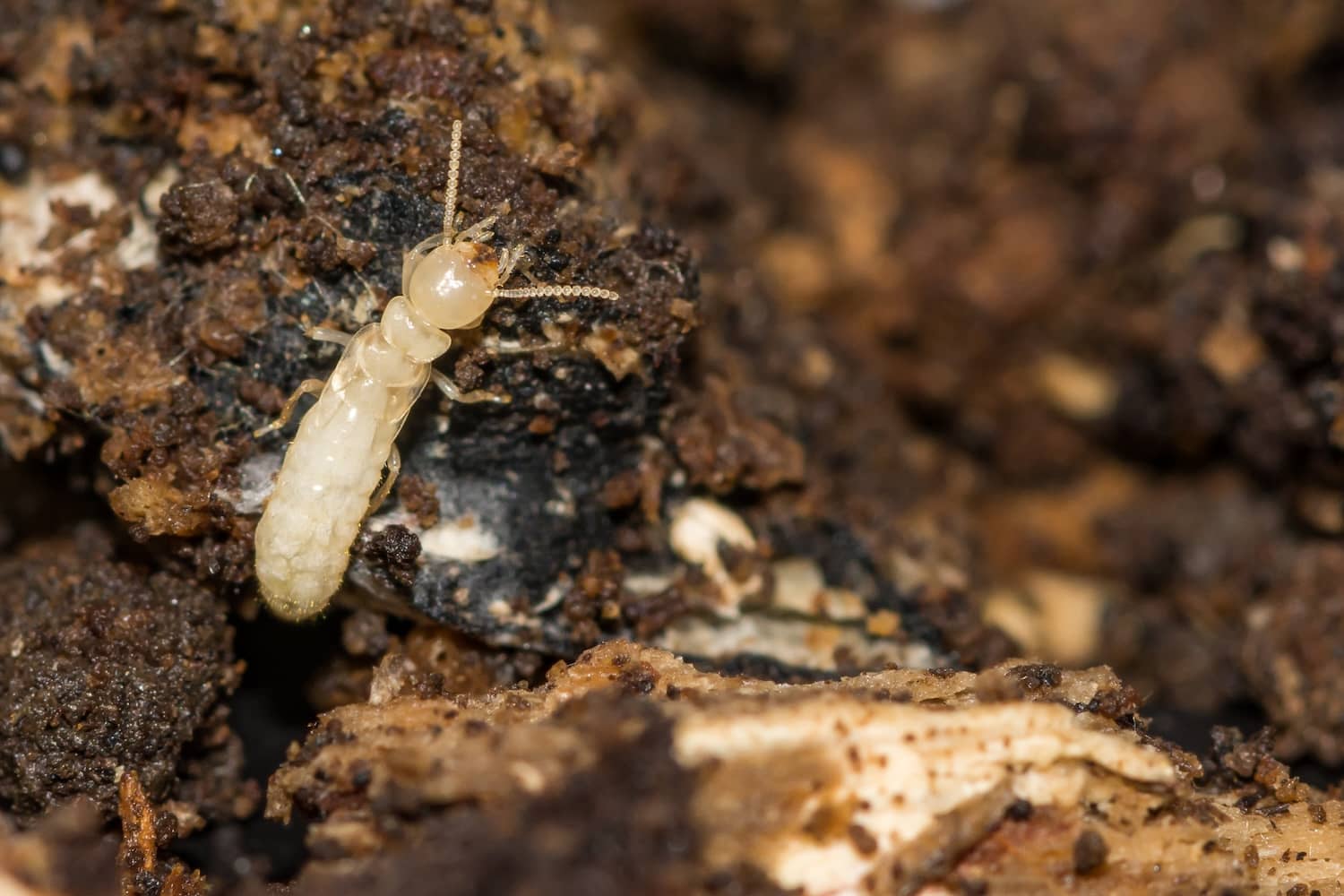
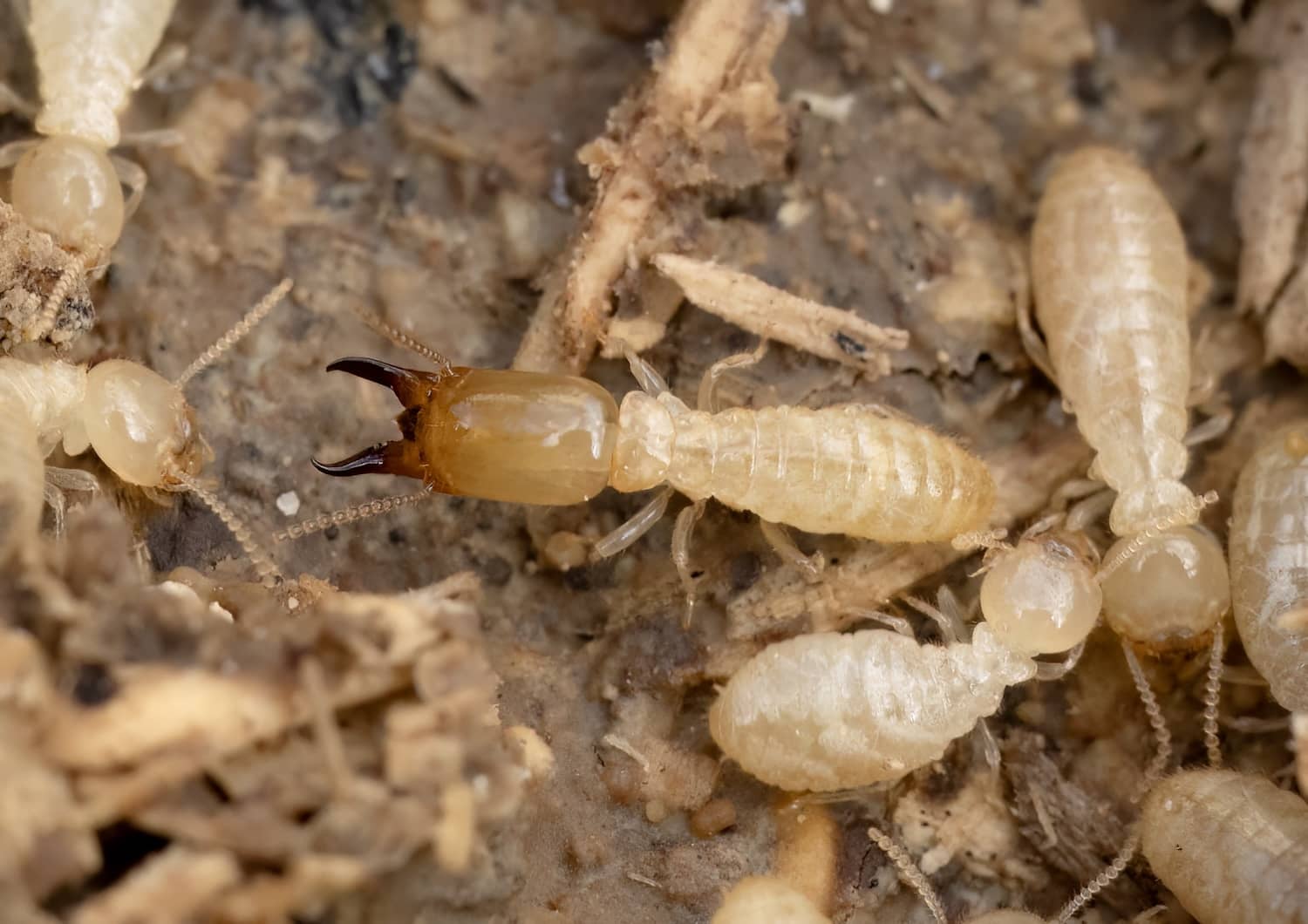
Native Subterranean Termites Look Like?
Native Subterranean Termites are small, pale insects that live underground and build mud tubes to access food sources. They have soft, creamy-white bodies with darker heads. The worker termites are about 1/8 inch long and wingless, while the soldiers have larger, darker heads with strong mandibles for defense. During swarming season, reproductive termites, known as alates, develop wings and are dark brown to black, measuring about 1/4 to 3/8 inch long. These swarmers are often mistaken for flying ants but can be distinguished by their straight antennae, equal-length wings, and broad waists.
Damage They Cause?
Native Subterranean Termites can cause severe structural damage by feeding on wood, flooring, and even wallpaper. They consume cellulose, weakening wooden structures from the inside out, often going undetected for years. Their damage includes:
- Hollowed or damaged wood with a layered or honeycomb appearance.
- Mud tubes on walls, foundations, or crawl spaces, used for moisture and protection.
- Sagging floors and ceilings due to compromised structural integrity.
- Sticking doors and windows from wood warping.
Since they work from the inside, infestations often go unnoticed until significant damage occurs, making early detection and professional treatment essential.
Formosan termite
Formosan termite

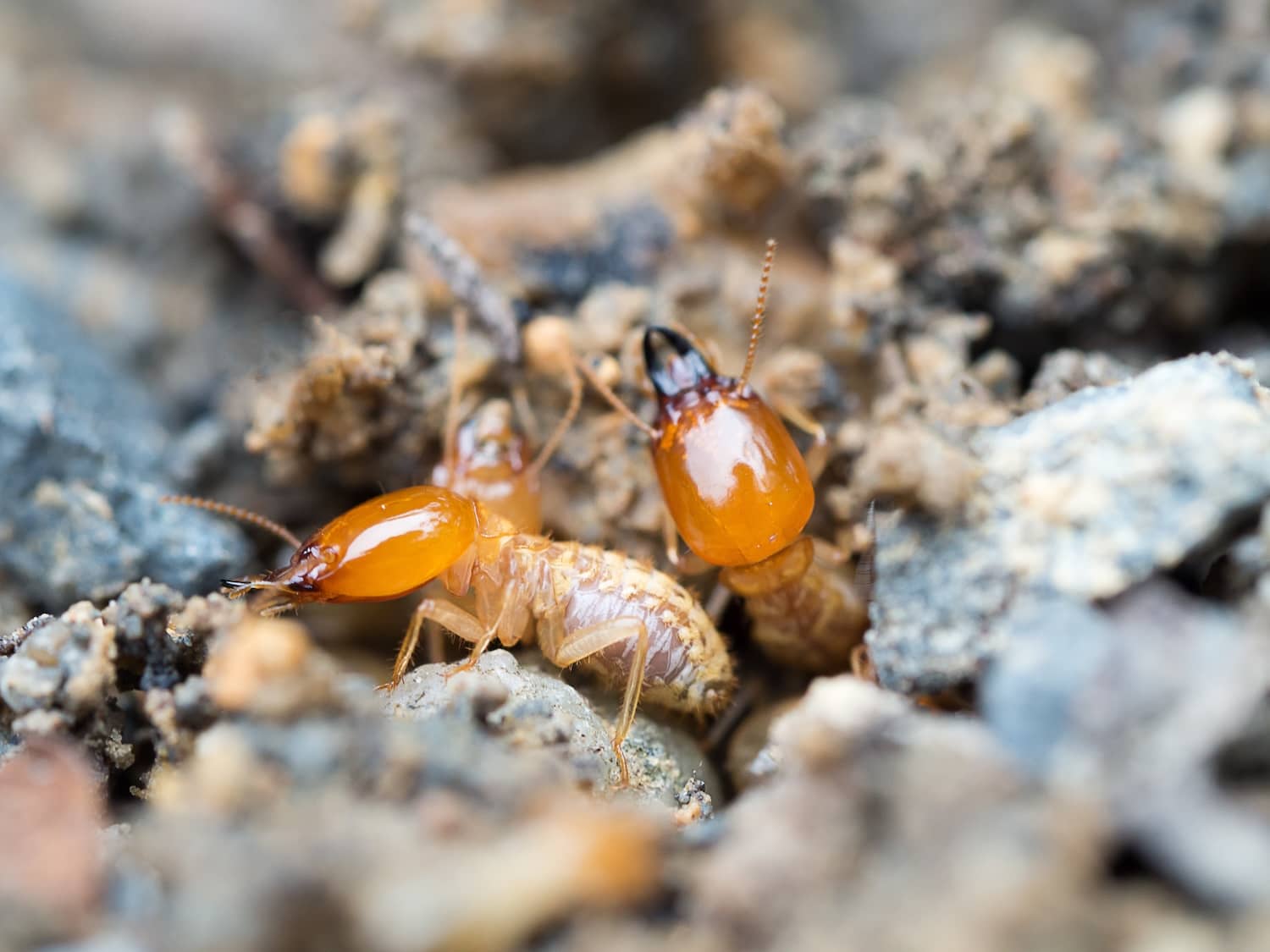
What Formosan Termites Look Like?
Formosan Subterranean Termites are a more aggressive and destructive species of subterranean termites. They are similar in appearance to native subterranean termites but have some key differences:
- Workers are creamy-white and about 1/8 inch long, similar to other subterranean termite species.
- Soldiers have large, orange-brown heads with curved mandibles and are more aggressive in defending their colony.
- Reproductives (Alates or Swarmers) are yellowish-brown with translucent, slightly hairy wings and are about 1/2 inch long. They are often attracted to lights during swarming season.
Formosan termites form massive colonies and can cause extensive structural damage in a shorter time than native subterranean termites.
Are Yellowjackets Dangerous?
Formosan Subterranean Termites are among the most destructive termite species, capable of causing severe structural damage in a short period due to their large colony sizes and aggressive feeding habits. Their damage includes:
- Rapid wood destruction – They consume wood at a much faster rate than native subterranean termites.
- Compromised structural integrity – They weaken beams, flooring, and walls, leading to potential collapses.
- Mud tubes – These shelter tubes allow them to travel above ground and access food sources.
- Damage to non-wood materials – They have been known to chew through plaster, insulation, and even soft metals like lead and copper.
- Large, hidden colonies – Their underground nests can house millions of termites, making them difficult to control.
Because of their aggressive nature, early detection or prevention with professional treatments are crucial to preventing severe and costly damage.
Drywood termites
Drywood termites
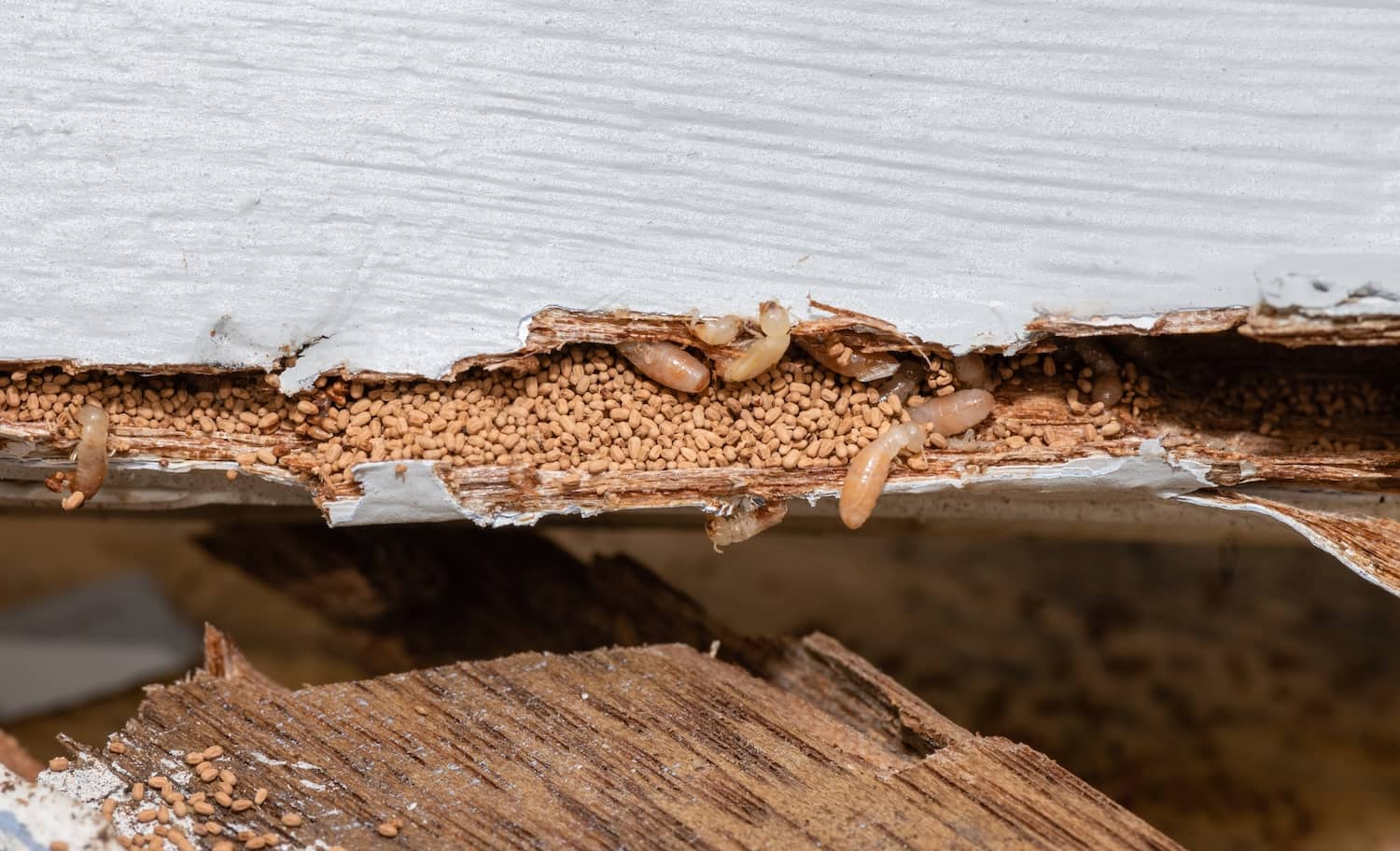
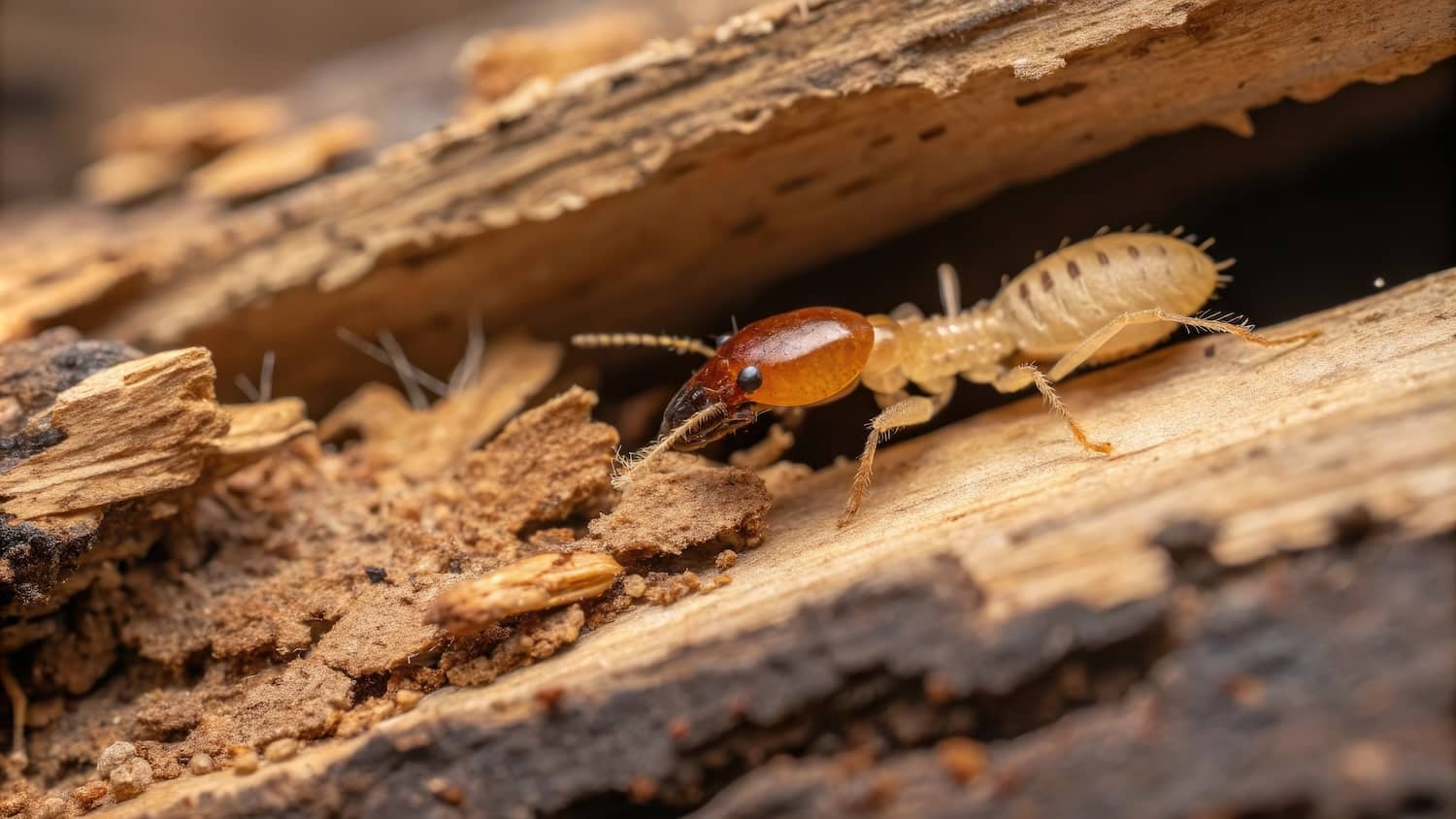
What do Drywood Termites Look Like?
Drywood Termites are light brown to dark tan in color, with long, oval-shaped bodies. They do not require contact with soil and live directly inside the wood they infest.
- Workers are creamy-white and about 1/8 inch long.
- Soldiers have larger, dark brown heads with strong mandibles for defense.
- Swarmers (Alates) are about 1/2 inch long, with smoky brown or clear wings that extend past their bodies.
Unlike subterranean termites, drywood termites do not build mud tubes and instead leave behind small, pellet-shaped droppings near infested areas as a sign of their presence.
Drywood Termite Damage?
Drywood Termites infest and consume wood from the inside out, weakening structures over time. Unlike subterranean termites, they do not require soil contact and can spread through furniture, framing, and wooden fixtures. Their damage includes:
- Hollowed or blistered wood – Infested wood may sound hollow when tapped and may have a blistered appearance.
- Weakened structures – Over time, they can cause sagging floors, warped doors, and cracked walls.
- Multiple colonies in a single structure – Because they don’t rely on soil, they can establish several infestations throughout a home.
